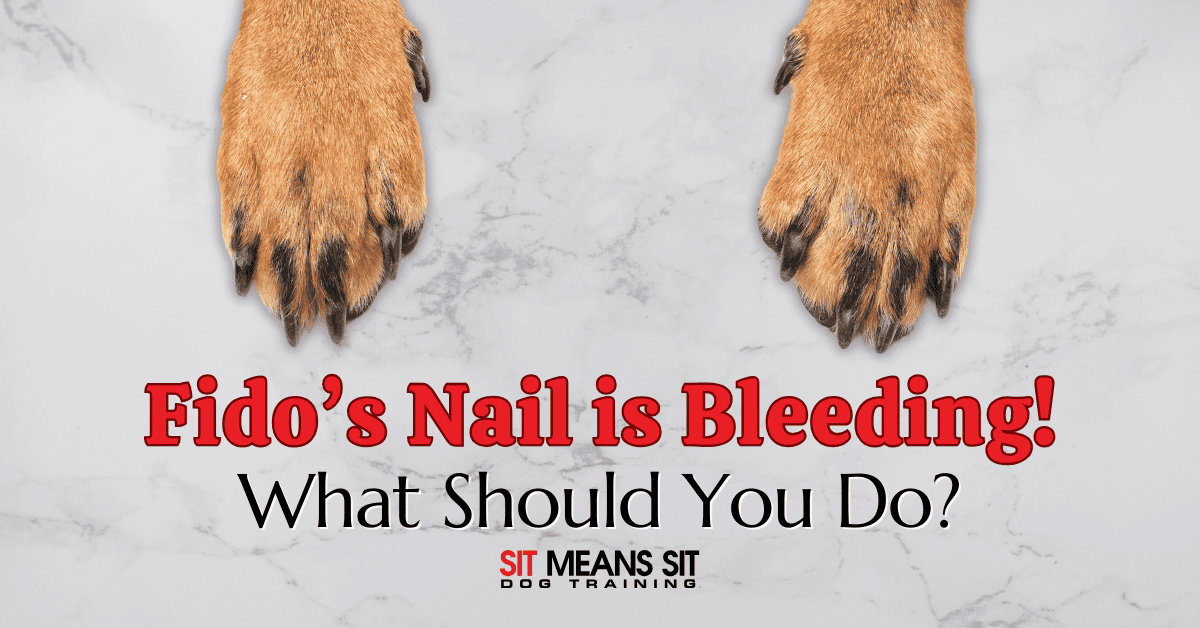It’s a moment every dog owner dreads. You’re carefully trimming your dog’s nails when, despite your best efforts, your pup pulls away and suddenly there’s blood. Don’t panic. Nail-trimming accidents are common, and while they can look dramatic, they’re usually nothing to worry about if handled properly. Here’s what to do if your dog’s nail starts bleeding and how to prevent it in the future.
Why Do Dog Nails Bleed?
Dogs’ nails aren’t just made of hard keratin. Inside each nail is a bundle of nerves and blood vessels called the quick. This sensitive part is what keeps the nail growing and is also what causes pain and bleeding if it’s cut too short or injured. If your dog has clear or white nails, the quick is often visible as a pink section within the nail. For dogs with dark nails, it can be harder to spot, which increases the chance of accidentally cutting too far.
Besides trimming accidents, nails can also bleed if they get caught on something or break. Either way, hitting the quick results in bleeding that can seem intense at first but is usually treatable at home.
The Importance of Staying Calm
Your dog will likely yelp, pull away, and seem startled if their nail starts bleeding. It’s easy to panic, but staying calm is one of the most important things you can do. Your dog can sense human emotions and takes cues from you, so if you remain steady and gentle, your pup is more likely to settle down too. Regardless of your internal distress, offer a few treats to your pup and speak softly while you get supplies. Keeping your dog calm will make the process of stopping the bleeding much easier and faster.
Use Styptic Powder to Stop the Bleeding
Styptic powder is the go-to solution for stopping bleeding quickly. It’s widely available at pet stores and pharmacies and is something every pet parent should keep on hand. To use it, either dip your dog’s nail directly into the powder or apply it using a cotton swab or your fingertip. Be sure to apply firm pressure to the nail for at least 30 seconds. The powder may sting slightly at first, but it helps the blood clot and can ease discomfort as well.
Styptic pencils, which are usually found in the shaving section of stores, work in a similar way. Just be cautious when using them, as they can leave dark stains on surfaces or skin.
At-Home Alternatives for Fido’s Nails
If you don’t have styptic powder on hand, don’t worry. You probably have something in your kitchen that can help. Here are a few options:
- Cornstarch or baking soda: These help blood clot by absorbing moisture. Pour a small amount into your hand and dip your dog’s nail into it. Apply gentle pressure for a couple of minutes.
- Bar soap: Slightly soften the end of a plain bar of soap and press the nail into it for a few minutes. It can help plug the bleeding.
- Ice: A cold compress or ice cube can help slow the bleeding by constricting the blood vessels. It also numbs the area, which can make your dog more comfortable. Just wrap the ice in a towel before applying it to avoid irritation.
It’s important to note that none of these methods work instantly, so be patient and try to keep your dog still during the process.
Know When to Call a Professional
Most nail bleeds stop within a few minutes. However, if your dog’s nail continues to bleed for more than 20 minutes despite your best efforts, or if the nail looks cracked, torn, or infected, it’s time to call your vet. They can safely remove damaged parts of the nail and check for deeper injuries that may need treatment. Also, if your dog becomes extremely distressed or if you’re unable to safely continue trimming the rest of the nails, it might be best to let a groomer or vet take over.
Preventing Bleeding in the Future
While accidents happen, there are a few ways to make nail trims go more smoothly next time:
- Keep styptic powder or an alternative within reach before you begin trimming.
- Use positive reinforcement to reward your dog frequently during the process with praise, treats, or play.
- Stick to a trimming schedule. Weekly or biweekly trims help keep the quick short, which reduces the risk of cutting it.
- Trim just a little bit at a time, especially if your dog has dark or thick nails. It’s better to do small trims more often than risk cutting too much in one go.
- Make an effort to handle your dog’s paws on a regular basis, so they’re more relaxed during nail trims.
Nail bleeds can be alarming, but they’re a common part of dog care and usually easy to manage. With the right supplies, a calm approach, and a little preparation, you’ll be able to stop the bleeding quickly and help your dog stay relaxed throughout the process. The more confident and patient you are, the more your dog will trust you the next time the nail clippers come out.
Check Out These Related Blogs for More Paw Care Tips!
When is the Pavement too Hot for Fido’s Paws?

